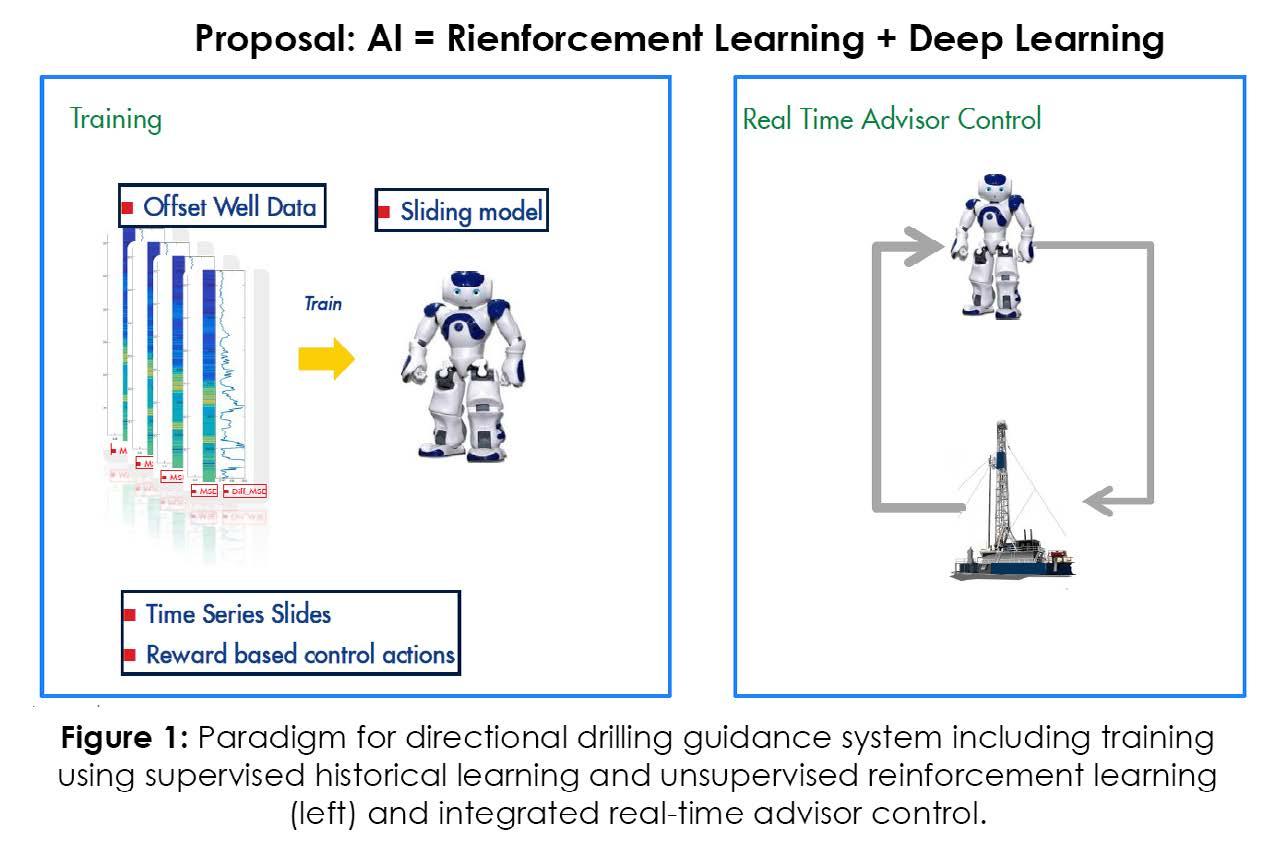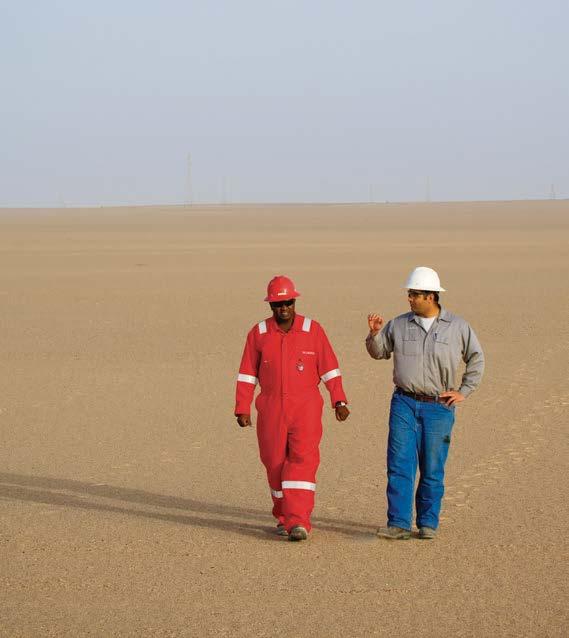
5 minute read
Industry Threshold
Machine Learning for Improved
Directional Drilling
Advertisement
Hani Elshahawi Digitalization Lead - Deepwater Technologies at Shell International Exploration and Production Inc.
Abstract Directional drilling is a complex process involving the remote control of tool alignment and force application to a very long drill string subject to variable external forces. Controlling bit tool face orientation while ensuring adequate rate of penetration (ROP) is quite challenging.
An artificial intelligence system was developed to learn from the actions of expert directional drillers and the mechanics of drilling simulations. Machine learning algorithms were employed to improve the efficiency of directional drilling: optimized ROP, less tortuous borehole, less personnel on board (POB), and consistency across operations.
To create a system for controlling tool face angle and guiding drill bit sliding during directional drilling, relevant historical data from directional drilling operations was gathered. Much of this data was recorded in the drilling logs, which the drilling operator traditionally uses to control drilling parameters. The collected data was then filtered and used to structure and train artificial neural networks and select appropriate hyperparameters.
The neural network developed could replicate the decisions of expert directional drillers within a small error (<3%). Reinforcement learning was then successfully used to improve network performance, particularly for conditions not previously considered.
Methods, Procedures, and Process We have engaged in the development of a deep learning, artificial intelligence system to learn from the actions of expert directional drillers and drilling simulations (Figure 1) and generate predictions or decision-making based on complex patterns in previously collected data. operation as well as the resulting effects on the drilling tool and wellbore. Much of this information is recorded in the drilling logs and includes differential pressure, rotary torque, hook
The project was broken down into the following tasks to achieve the stated objectives: information formulation including Operator engagement and data preparation, immersion and analysis including artificial neural network construction, evaluation, drilling simulation, and reinforcement learning.
Before machine learning can commence, it is essential to gather and understand the relevant data. Data scientists engaged with Operator subject matter experts to transfer data that was used to structure and train the neural network. In the case of a directional drilling system, the network requires any available information a driller used when making decisions about slides in a drilling load, tool face angle, and ROP as well as planned and estimated actual wellbore trajectory. The drilling operator in turn controls weight on bit (WOB), flow rate (GPM), rotary speed (RPM), and top drive center position and torque. Knowledge-sharing meetings between directional drilling domain experts and artificial intelligence data scientists enabled determination of viable learning goals and informed the design of the artificial neural network. Raw data from directional drilling logs was processed, filtered, and parsed to feed it into the custom machine learning system.

The gathered datasets were divided into three separate sets to train and validate the results; training, validation, and testing. Training data is used
in the training of the network itself and will generally comprise the bulk of the collected data. Validation data is used for active analysis of the network during training to prevent training that diverges from a generalized solution. Finally, testing data is kept separate and used only for final evaluation of a trained network.
For each dataset, the collected historical data was separated into input data (the information a driller uses to make decisions) and target data (the actions the driller took). The network ingests input data and compares its own output actions against those taken by the experts to determine whether it has made errors and what those errors are. Over time small corrections improve the calculated output for many separate historical examples and merge into a more general solution to the problem. A network was considered successful if it made similar choices as the experts.
Results and Ob servations Historical directional drilling data, including that from measurement while drilling (MWD), were compiled from fourteen horizontal wells in Appalachia and the Permian Basin. In addition to time/date stamps, the data included bit depth, hole depth, hook load, weight on bit, differential pressure, gravity tool face, magnetic tool face, tool face angle, ROP, rotary RPM, rotary torque, standpipe pressure, total pump output, and other, more extraneous categories. The datasets were then unified for use in training and validation (Figure 2). Telemetry data was used to estimate wellbore trajectory and plotted against the planned trajectory. The neural network predicts future
differential pressure and rotary torque based on current tool face, weight on bit, total pump output, rate of penetration, current rotary torque and current differential pressure. In this way, it follows the historical choices of experts. After removing data errors, the directional drilling logs were filtered down to on-bottom sliding events based on a 21-point sliding standard deviation. The data was then split for training and validation, with 377,000 timepoints used for training and testing and 214,000 timepoints for network validation. After 1,800,000 training steps, normalized percentage error for differential pressure prediction was down to 0.21% and that for rotary torque prediction was at 2.72% when tested against directional drilling not included in training or validation processes (Figure 3). Collaboration with directional drilling experts allowed expedient collection, compiling, and filtering of directional drilling data from multiple rigs in different regions in preparation for machine learning. Unsupervised learning in the form of hierarchical clustering and adversarial neural networks was used to confirm the physical situation, subject matter expert guidance, and inputs and outputs of the drilling guidance system. Training based on these inputs and outputs resulted in an artificial neural network that predicted the choices of expert directional drillers within 3% error.
Future directions for machine learning for improved directional drilling include integrating the system with geosteering information and guidance to improve wellbore trajectory targeting.
Conclusions and Future Directions The machine learning approaches outlined in this aricle show great potential for developing an advisory system for directional drillers and ultimately an automated directional drilling rig.

This may involve collecting the information from drilling logs or deriving it from video footage on the drill rig. Additional efforts will focus on integrating the trained machine learning system with a supervisory mode for advising a human expert and testing the system in a real-world drilling environment with the goal of improving the overall economics of directional drilling operations.

This article is based on the full length paper OTC-28633-MS - Machine Learning for Improved Directional Drilling.











